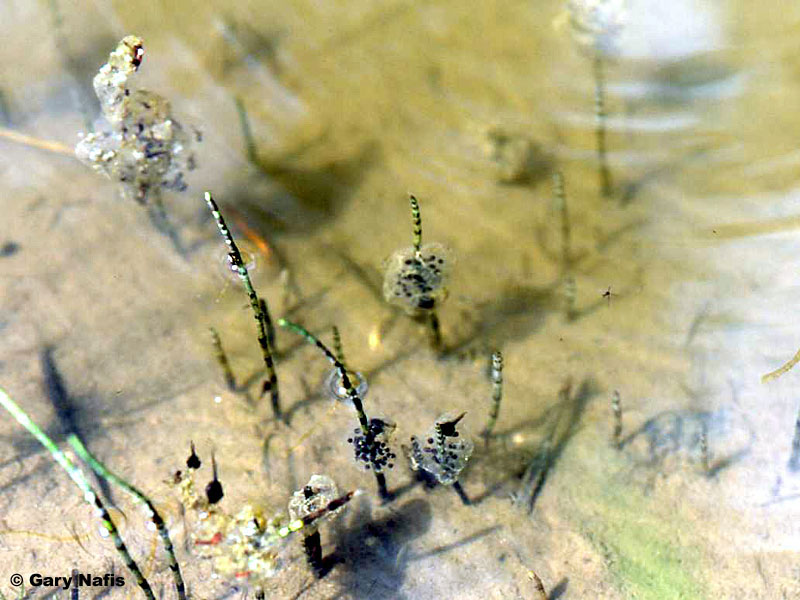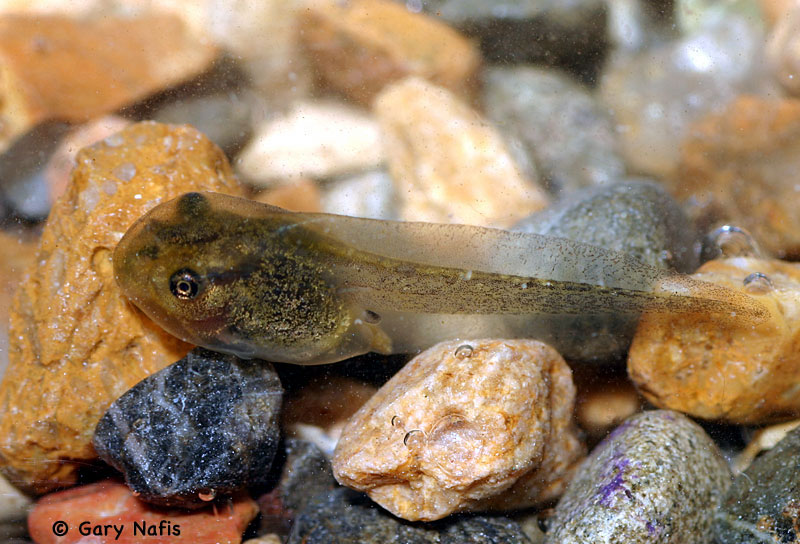Reproduction
For the Pacific tree frog, breeding season occurs from winter to spring usually December to May and peaks are in February and March. During breeding migration the Pacific Tree Frog moves from cool and moist places to aquatic breeding sites (AmphibiaWeb 2013). For reproduction they typically prefer warmer climates and ponds and during the night. Pacific tree frogs breed in both temporary and permanent waters and usually breed in fishless wetlands. They tend to breed in ponds, lakes, ditches, marshes and slow-moving streams (California Herps 2013).
During the breeding season, males are found near small bodies of
water where they begin to sing a choral song to attract a mate.
Females are usually attracted to males based on their calls and
different colors in their throats (Animal Diversity Web 2013). To
learn more about their other unique physical features, visit the
Adaptations page. Pacific tree frogs
are usually solitary and nocturnal until it comes to mating season.
Reproduction occurs over a period of a few weeks depending on
availability for water and the water temperature.

Egg laying doesn’t occur until the water temperature exceeds 12 degrees Celsius or 54 degrees F. They can produce anywhere from 5 to 70 eggs and the eggs grow and are hatched in three to four weeks. A female Pacific tree frog lays anywhere from 500 to 1,250 eggs in a single year. From there they then develop into tadpoles within three to seven days, during this time they are very vulnerable to predators (Benard 2006). To learn more about Pacific tree frog predators visit the interactions page. Metamorphose of the tadpoles usually takes about 2 to 2 ½ months and occurs from June to late August (California Herps 2013).
Pacific tree frog tadpoles are about 46.6 mm long, medium sized,
brown in color and their tails are not flagellated. These tadpoles
gather in large groups for thermoregulation and to avoid predators
(ADW 2013). Tadpoles require standing water for the period of growth long
enough to complete their aquatic development which can last anywhere
from three to five months depending on the water temperature, the
cooler water results in decreased development.
 After
their aquatic development, metamorphose begins transforming the
tadpoles into ½ inch juvenile frogs. This process usually takes
place between the months of July and September. The Pacific tree
frog reaches full sexual maturity at 1 to 2 years of age, and their
life span can range from 5 to 9 years (Breakthrough 2013).
After
their aquatic development, metamorphose begins transforming the
tadpoles into ½ inch juvenile frogs. This process usually takes
place between the months of July and September. The Pacific tree
frog reaches full sexual maturity at 1 to 2 years of age, and their
life span can range from 5 to 9 years (Breakthrough 2013).
